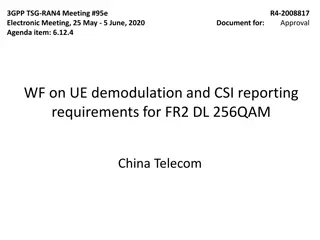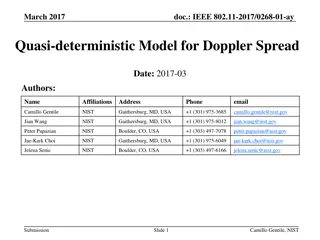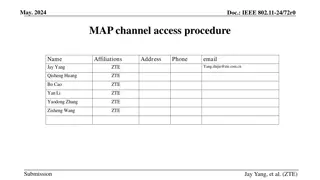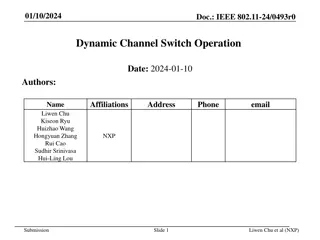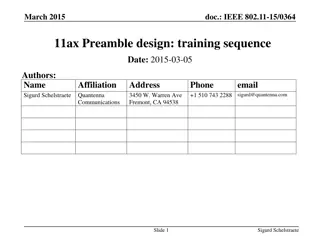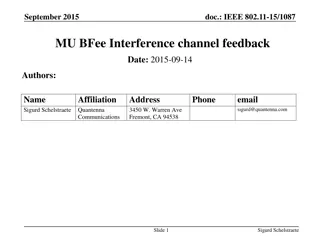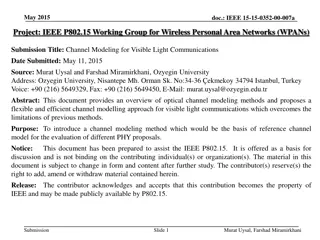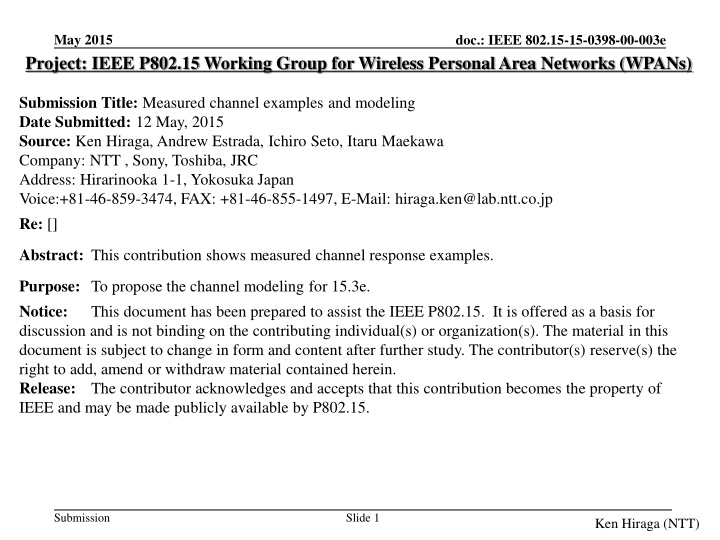
Channel Response Modeling and Clustering Proposal for WPANs
Discover the measured channel response examples and proposed channel modeling approach for IEEE 802.15-15-0398-00-003e. The document showcases reflections, power delay profiles, and proposed cluster models based on transmission distances. Explore the LOS and inter-device reflections within the proposed model to enhance understanding and implementation of Wireless Personal Area Networks.
Download Presentation

Please find below an Image/Link to download the presentation.
The content on the website is provided AS IS for your information and personal use only. It may not be sold, licensed, or shared on other websites without obtaining consent from the author. If you encounter any issues during the download, it is possible that the publisher has removed the file from their server.
You are allowed to download the files provided on this website for personal or commercial use, subject to the condition that they are used lawfully. All files are the property of their respective owners.
The content on the website is provided AS IS for your information and personal use only. It may not be sold, licensed, or shared on other websites without obtaining consent from the author.
E N D








